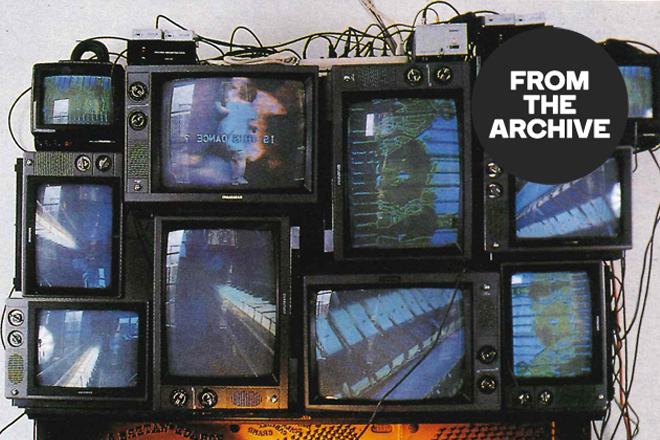THE ELECTRONIC ART OF PUVANAI DARDARANANDA
Living in this age, it’s hard for someone to avoid being involved with information and its effects to some degree. Many people are now making use of multimedia technology to achieve their goals, including artists such as Nam June Paik. This Korean-born artist has introduced the art world to an art that relates to the age of information and multimedia subsequently known as “Electronic Art,” that has become widely recognized today.

Originally published in art4d August, 1995
In Thailand, this art form is not yet popular. However, a young Thai artist named Puvanai Dardarananda recently walked into art4d’s office with two videocassettes of works which he classified as electronic art. The first one features a project called “The Zoo” and the second is an untitled experiment. Puvanai is now studying at Rennselar Polytechnic (RPI), Troy, New York, in Integrated Electronic Arts.

“The Zoo” records reference to different zoo animals at a quick and reversed pace, with graphics depicting the definitions of each animal running over their images. The sound effects are produced from Puvanai’s own voice speaking the sounds “ooz” and “lamina” which, when played in reverse, are heard as “zoo” and “animal.”
The concept of “the zoo” is based on the use of information from a dictionary. Some words have various different meanings, for example, a trunk can be either a box for clothes, the rear of a car or an elephant’s snout. Electronic art signifies something of the future. What will the future zoo look like? Will it be recorded in a video because there will no longer be animals on earth? What if no visual records of these animals remain, how will we learn about them? Will we have to make guesses about them based on information found in the dictionary? These types of questions come to mind after viewing, “The Zoo.”
The second work is a collaborative experiment by Puvanai and his professors at RPI. It features a distortion of the actual scenery at a desert video-taped by a moving car through different technical processes of video tuning, speed adjustment and reshooting. Throughout the process, the original image of the desert has turned into an abstract sphere of illusive colors moving and withdrawing infinitely.

Originally published in art4d August, 1995
Comparing the two works, the experiment seems to produce stronger effects on the synthesis of various different electro-techniques, ranging from image editing and reversal of footage to sound distortion. “The Zoo” on the other hand, emphasizes a context and codes for an individual’s interpretation more so than technical effects.
The means of representing man’s thoughts is getting more and more sophisticated along with the development of advanced technologies. Things are interdependent. Whether technology leads and man’s thoughts follow or vice versa, the most important thing is that we should not let progress become an invaluable asset. Thought is an important function which helps men to compete and master technology. art4d will always support those who never stop thinking, and we see Puvanai Dardarananda as one among many.

This article was originally published in art4d August, 1995

